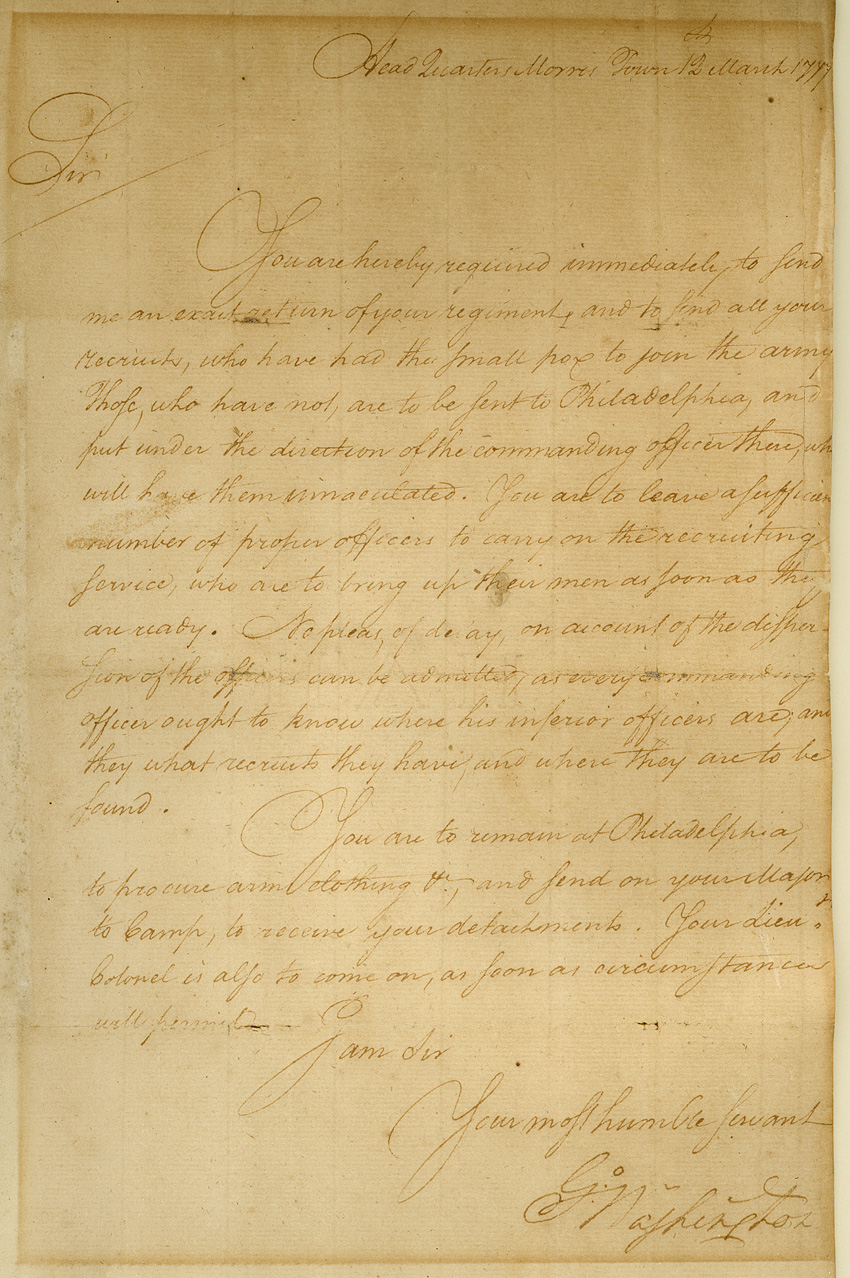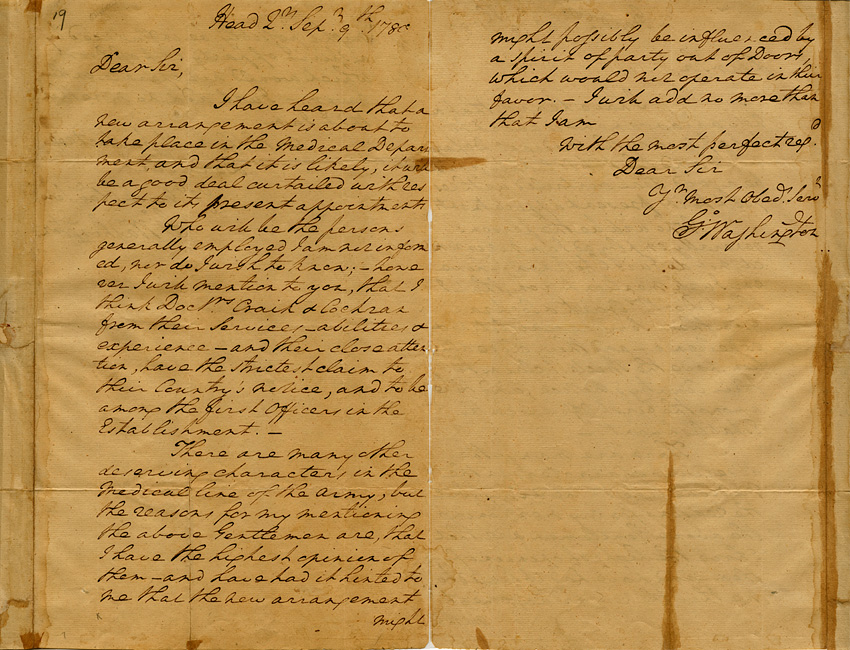On June 15, 1775, George Washington was unanimously selected as commander in chief of the Continental Army. Within weeks, he began making preventative health decisions about food storage, placement of latrines, disposal of animal carcasses, and general provisions for clothing and shelter.
“More to dread…than from the Sword of the Enemy.”
Above quote from a letter from George Washington to Doctor William Shippen, Jr., February 6, 1777
Washington Taking Command of the American Army, Currier and Ives, 1876
Courtesy Mount Vernon Ladies’ Association
Washington faced the challenge of winning a war with limited supplies and an often diminishing number of able and healthy men.
A Nurse tends to injured soldiers of the Revolutionary Army
Courtesy National Library of Medicine
Washington’s soldiers were at risk from many ailments: dysentery, septic wounds, smallpox, and an infection known as camp fever.
Provisions, including salt, fish, beans, and rice, as well as whiskey, rum, beer, and wine, issued under General Washington at Valley Forge, April 1778
Courtesy Mount Vernon Ladies’ Association
Washington and his troops arrived at Valley Forge in December 1777 and faced a harsh winter with few rations for more than 12,000 men. Many were undernourished, poorly clothed, and often very ill.
Bottle of musk, used in perfumes and medicines, carried by Washington throughout the Revolutionary War, ca. 1770–1790
Courtesy Mount Vernon Ladies’ Association
An order from George Washington to Lieutenant Colonel Grier to transport new recruits to Philadelphia for smallpox inoculation, March 12, 1777
Courtesy Mount Vernon Ladies’ Association
In addition to the routine ailments faced at camp, the American army faced a more severe problem—a potentially deadly outbreak of smallpox that threatened the outcome of the war. Washington began to inoculate and quarantine troops to control and minimize the impact of the disease. His decision was bold and dangerous, as inoculation brought risk of death, although far less frequently than if contracting smallpox naturally.
A letter from George Washington to the Honorable Joseph Jones of Congress in support of the employment of Doctors Craik and Cochran to the Army’s medical department, September 9, 1780
Courtesy National Library of Medicine



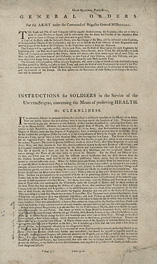
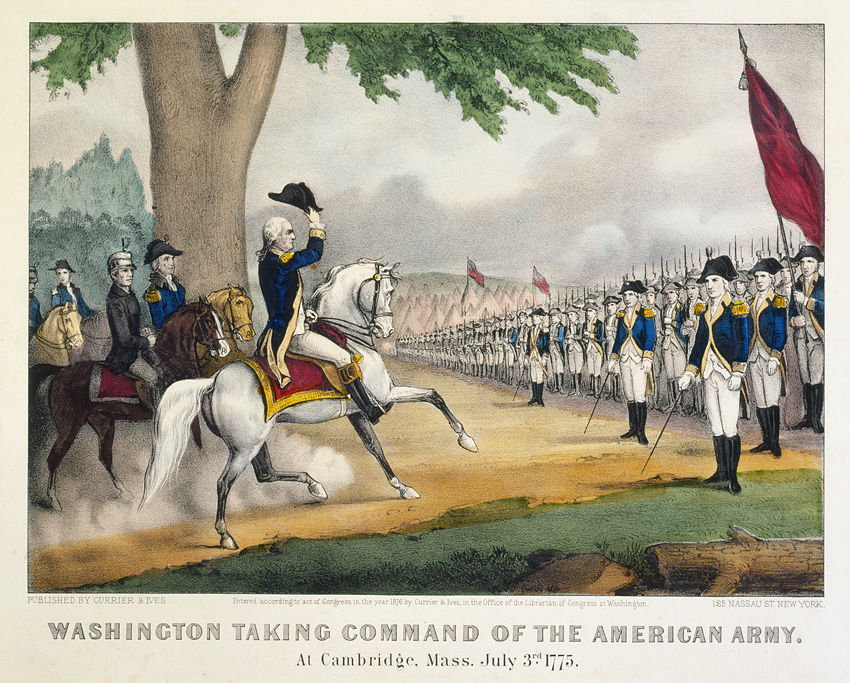
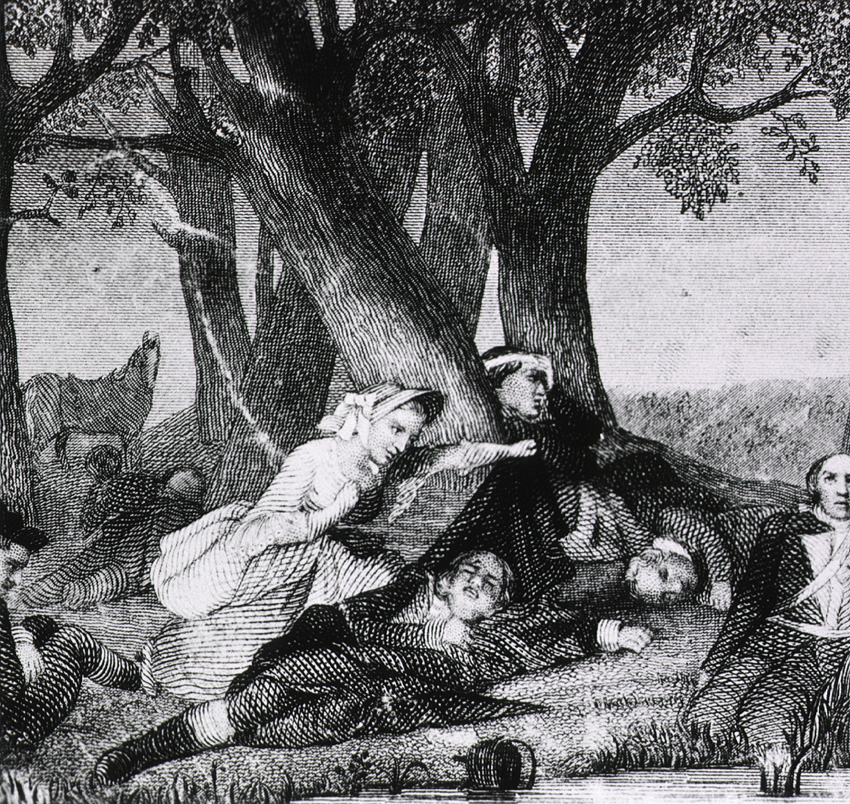
![[illegible] Chart with columns for types of food with numbers indicating quantity.](img/gw-exhibition-battlefront-OB2085-lg.jpg)
![Glass bottle with browned paper label hand writing [illegible].](img/gw-exhibition-battlefront-OB2087-lg.jpg)
